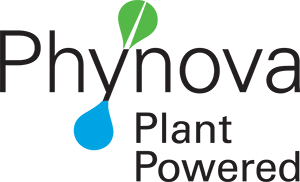HOW TO MINIMISE JOINT PAIN
Joint pains are extremely common and can affect all age groups young and old. Varying activities, stressors and factors can cause joint pain.
Knowing how to minimise and find joint pain relief is key to improving your well-being and overall health whether you’re an office worker, athlete or construction worker.
It’s helpful if you’re able to analyse what type of joint pain you’re experiencing and how you can naturally aid joint pain relief with traditional herbal remedies.
Let’s take a look at the types of joint pain you may experience and how you can alleviate the symptoms;
Different types of joint pain: Are you aware of the types of joint pain that can arise from being in certain industry positions? For instance;
As an office worker: Or someone within a role that is mainly sedentary, you’re at a higher risk of experiencing signs and symptoms such as numbness, tingling, and loss of sensation in the hands and fingers. Which is caused from repetitive tasks such as that of typing on a keyboard.
Lower back pain: From being sat in a chair for several hours at a time can cause bad posture which fuels lower back symptoms causing joint pain and stiffness, reducing motion and can cause pain whilst sleeping.
Eyestrain: Having to concentrate for long periods of time at a computer screen can lead to blurry, watery, sensitive and strained eyes. That can lead to neck strain, headaches and dry eyes.
As an Athlete: The additional amount of stress placed on the body will of course depend on the sport that you’re playing. Some athletes do not suffer injury or joint pain until many years after they have retired and when they may put on weight. Therefore, putting an additional strain on joints. Some sports will also increase the risk factor of joint pain in an athlete.
For example, as a runner you are more likely to suffer from joint pains within your knees and hips from the constant pounding of running for hours every day. Joint pains can cause fatigue, joint swelling and joint warmth.
Construction Worker: Or anyone that is in a manual labour role is at a greater risk of suffering from reoccurring joint problems and pain. The signs and symptoms can be varied dependent on the nature of the labour.
The heavy physical work of a construction worker means that joint pain can impact many different parts of the body. The particular joints most likely to be affected are the knees, hips, big toes, fingers and spine. Symptoms can range from swelling and inflammation, to weakness and instability.
Activity levels: As suggested within the contrasting roles above; dependent on the activity level whether it be low to moderate or high levels of intense activity, they will all have an impact on the body. But the affect upon the muscles and the type of joint pain you may experience will be different and varied.
Diet: Your diet and what you decide to eat can help to reduce pain and inflammation and studies suggest that by adopting a clean diet such as that of a Mediterranean diet including whole foods, unsaturated fats, olive oil, legumes, fish which contains high amounts of fatty Omega-3 acids can aid improvement in naturally relieving joint pain.
Age: It is estimated that over 8 million UK people suffer from joint pain.
There are many different reasons why you may be experiencing muscle or joint pain. Signs and symptoms can be impacted by lots of different factors. It could be from injury, day to day repetitive activities carried out, and can even be due to conditions such as arthritis.
Lower back pain is one of the most common types of joint pain reported under the age of 50. It is actually more likely to occur within your 30s and 40s. Over the age of 50 and it is more likely that back pain is as a result of arthritis.
Tensions in the joints and muscles can also cause headaches in your temples or forehead. More likely to happen between the ages of 20 -50.
It’s important to remember that if you experience any joint and muscle pain at any age it shouldn’t be ignored. There are however natural ways of minimising your risk and alleviating joint pain.
Natural ways of relieving joint pain
Massages: Looking at massages is a relaxing way to improve stiffness, ease anxiety, aid a range of motion in your joints and promote restful sleep.
Stretches: Daily repeated stretches have been shown to help to reduce joint pain and its associated symptoms.
Exercising: Try introducing exercises alongside your daily stretches. Stretching your muscles will help to strengthen them, aid flexibility and reduce joint pain.
Herbal remedies: Offering natural pain relief, many herbal remedies are known to contain anti-inflammatory and antioxidant properties. As well as helping to improve your immune system and joint mobility.
How Phynova can help
Sigesbeckia is a medicinal plant that has been used for centuries in many countries around the world to relieve wide-ranging musculoskeletal pain, including backache, rheumatic pain, joint and muscle pain, with no known side-effects. Known for its anti-inflamatory and antioxidant properties, sigesbeckia offers natural joint protection and pain relief.
Suffering with long-term, joint pain is no fun for anyone. And looking for a natural way to offer joint pain relief to your symptoms can feel like a daunting task. Knowing the reason why you are experiencing joint pain will help you to ascertain how you can soothe symptoms. It’s all in knowing what natural pain relief to choose, when to choose it and why, that will offer you relief all round.
